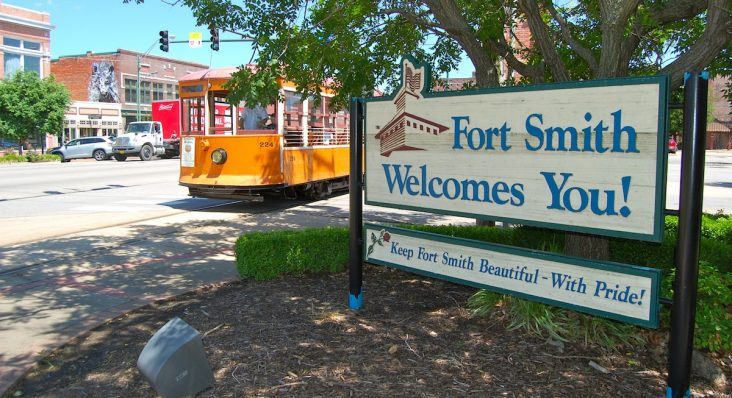CBID takes another step toward property assessment of downtown district
by October 31, 2019 4:45 pm 657 views

Discussion ranged Thursday (Oct. 31) at a study session of the Central Business Improvement District Board of Directors on how many mills would be needed and what exactly they would pay for if a property assessment was enacted within the downtown Fort Smith district.
The board voted Aug. 20 to proceed with plans for property assessment within the district, a move they hoped would allow the board to do more things to improve the downtown area of Fort Smith.
As of the end of September, the CBID had a checking account balance of $66,794. The biggest source of income is $5,410 in monthly rental income from the University of Arkansas at Fort Smith for the Lion’s Den building in the district. The biggest expense for the CBID is a $4,810 monthly loan payment to First National Bank of Fort Smith.
The board’s approved motion will not guarantee an assessment. It merely authorizes the board to look into what can be done and start making plans to organize a petition signed for one. The board also passed a motion to obtain counsel to help them proceed with plans to levy an assessment.
According to state law, there are two types of assessments that can be levied against real property inside a city’s improvement district – a project/improvement-specific assessment, levied to fund a “specific ‘plan of improvement,’” or a supplemental annual assessment to be used for ongoing operations or maintenance activities, Deputy City Administrator Jeff Dingman said in a memo to the board dated Aug. 16.
Bill Hanna, CBID board chair, said the Fort Smith CBID is one of the few in the state not funded by an assessment.
The project-specific assessment can be used to for on one or several major improvement projects. This type is “implemented by filing the assessment of benefits to pay for the improvement(s) with the city clerk, who then puts it in front of the City’s governing body to adopt by ordinance,” the memo said.
Before an assessment can be levied, more than 50% of property owners in the district must sign a petition agreeing to an assessment. The CBID board would then present that petition and the plan to the Fort Smith City Board of Directors. Dingman said under the state law if the CBID has the required signatures on the petition, the city’s BOD would be compelled to approve the assessment as an ordinance.
But before a petition can be presented to property owners for signatures, the CBID board has to agree on what that petition will request.
There was initially discussion among the group to designate some of the money that would be raised from the assessment to go toward a specific program or project while the majority of the money would be used for projects as determined by the board. That idea was rejected.
“I just don’t think this is going to go very well if you don’t tell them how everything is going to be spent,” said Steve Clark, CBID board member. “We would be better off by giving specifically where every last dollar is going in order to inspire confidence and ensure transparency.”
Based on property valuations as of July 28, each 1-mill assessment on properties within the CBID would amount to $38,834.47 in annual operating revenue, Dingman said. The board was in agreement at Thursday’s study session to ask for either a 7- or 8-mil assessment, which would mean approximately $271,000 to $310,657 in annual funding for the district.
The general consensus was for the money to go toward a Green and Clean project and a Safety and Security project for the downtown district. A Green and Clean project would include streetscape maintenance and landscaping, which could incorporate care of flowerbeds as well as pruning and possible replacement of trees, cleaning and repairs to benches, lighting and trash receptacles, liter control, conversion of lights along Garrison Avenue to LED and more, a draft prepared by Dingman said.
“You could look at changing the flowers out in the flower beds by the season. A lot of cities do that,” Dingman said.
The funding for the Green and Clean project would supplement the work already done on the landscaping and maintenance provided by the City of the Fort Smith. It would not replace it, a point Sam T. Sicard, CBID board member, emphasized during discussions. In order to accomplish these things, a commercial landscaping would need to be contracted, Dingman said.
As for the Safety and Security project, board members wanted to discuss with Police Chief Danny Baker what the Fort Smith Police Department was able to do in regard to having dedicated patrol in the downtown area. Then funding could either be provided to the police department to help pay for that patrol or the board could look into hiring private security “ambassadors.”
The board agreed to vote on a motion that would draft a petition detailing what assessment will be sought and what it will go toward providing in the downtown district at its Nov. 19 regular board meeting.
